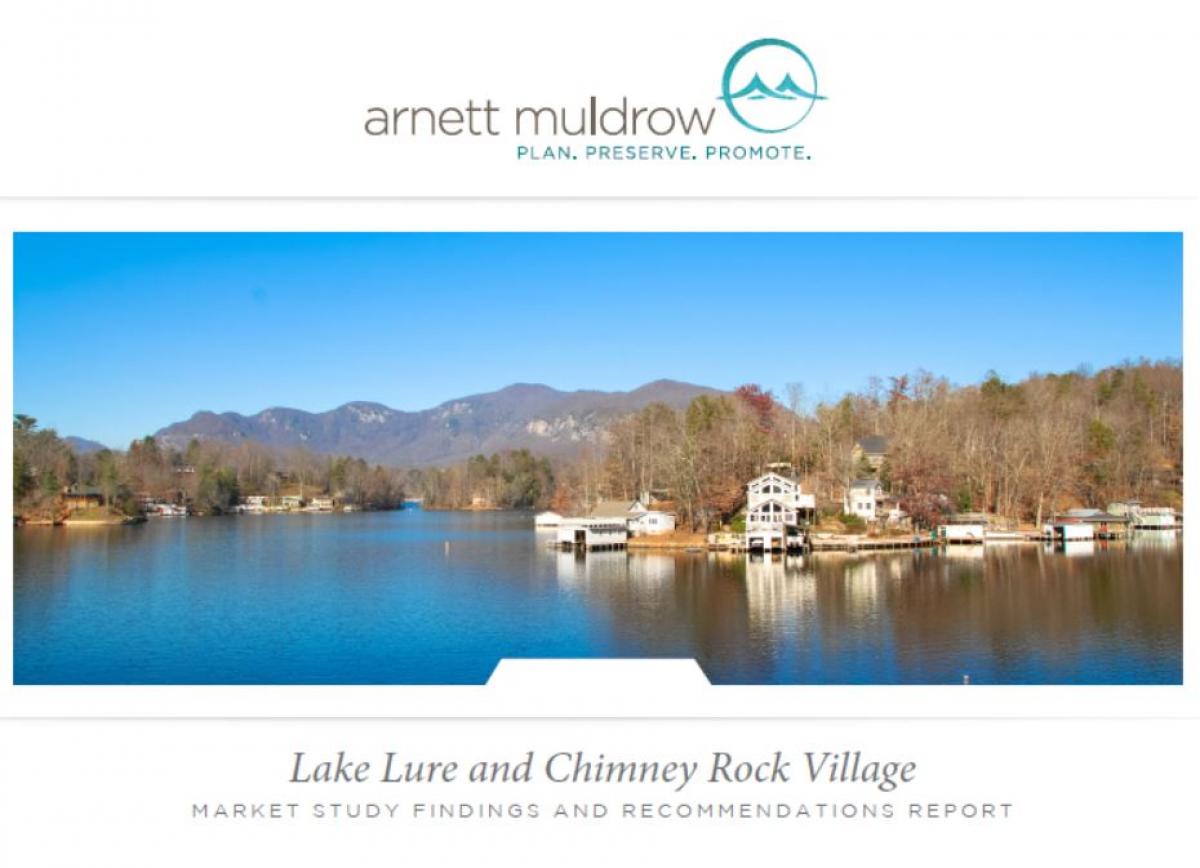Arnett Muldrow Market Study Findings and Recommendations

In her book, In the Shadows of Chimney Rock, Rose Senehi says, “There are places on this earth that touch the soul with the sheer power of their magnitude. The Hickory Nut Gorge in Western North Carolina is such a place.”
No truer words were ever spoken about this amazing landscape where the Cherokee hunted and lived for centuries prior to European colonization. Intrepid settlers found this place as a way to reach the valley that would grow to become Asheville. Some settlers decided that the Hickory Nut
Gorge itself would be their place to make a life and they would live in relative isolation until the late 19th century.
That is when Jerome B. Freeman purchased 400 acres of land including Chimney Rock. He was the first man with the idea of creating Chimney Rock as an attraction. However, it was Lucius B. Morse who had the vision to develop the park as an attraction just as travel was evolving from rail and
horseback to the automobile. Dr. Morse didn’t stop at Chimney Rock itself. He had a grander vision to create Lake Lure as an elegant mountain resort that would rival the mountain escapes of Europe. Earle Draper, a famous landscape architect, was engaged to craft a plan for Lake Lure that
would include a hotel, arcades for shopping, lakefront recreation, and homes for relaxation and retreat. The 1926 plan was as beautiful as it was ambitious.
However, the Great Depression intervened and the grand vision for Lake Lure was only partially completed. The Town of Lake Lure remains a place with a storied past that has never been fully realized. Meanwhile travelers with the freedom of automobiles (many of whom were workers in the
regional textile mills) found Chimney Rock and its surrounding beauty as a great getaway and Chimney Rock Village emerged to serve this growing car culture.
Both communities have continued to grow steadily as a place for day-trippers, second homeowners, retirees, and overnight guests. Rumbling Bald Resort added a new dynamic for the area as a nearly “self contained” community on the northern end of the lake. More recent developments like the Lake Lure Classical Academy are poised to attract more families to the region.
Perhaps the most important change the communities are undergoing is a significant transition since the arrival of Dr. Morse over 100 years ago. The State of North Carolina has acquired Chimney Rock Park as a state park and is working closely with the North Carolina Department of Transportation and the local communities on future investments expected to drive park attendance up significantly including a proposed entrance in the Town of Lake Lure. New amenities will attract visitors with different expectations of the locale and both communities are poised for this exciting and sometimes daunting change.
In a proactive move, the Town of Lake Lure commissioned a Phase 1 Town Center Master Plan in 2012 based on the recommendations of its 2007-2027 Comprehensive Plan. The goal of the Town Center Master Plan is to revisit the over eighty-year-old vision of Earle Draper and place it in a modern context. Furthermore, the plan is designed to provide Town leaders with guidance as it works with the North Carolina Departments of Transportation and Commerce as they work on road and park improvements.
Recognizing the need to have market data to help add some perspective to the build-out of the Town Center Master Plan and realizing that a marketing strategy is needed, the Town of Lake Lure engaged Arnett Muldrow & Associates, Ltd. of Greenville, South Carolina to complete this study. In an unprecedented move, the Town of Lake Lure and Chimney Rock Village agreed to partner in this plan recognizing that a unified approach would provide both communities more clear direction and more ways to cooperate.
This plan should be considered a part of a “trilogy” of plans that includes Town Center Master Plan, Phase I; the Transportation Plan. The “three legged stool” provides guidance for development, infrastructure, and market approaches to embrace the challenges and opportunities for both
communities.

